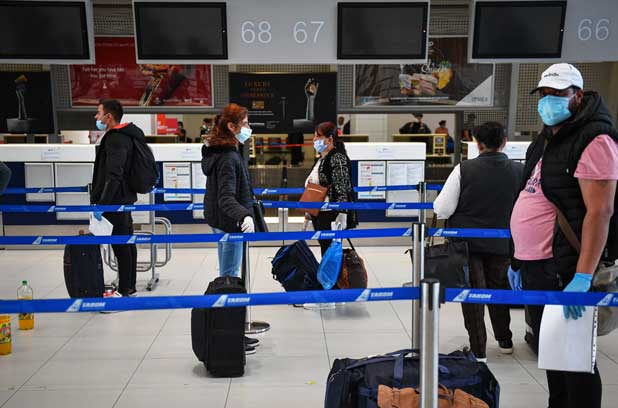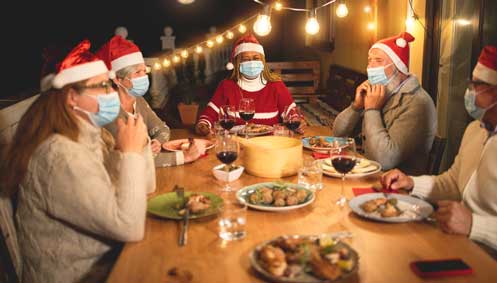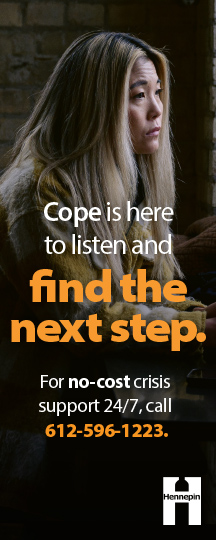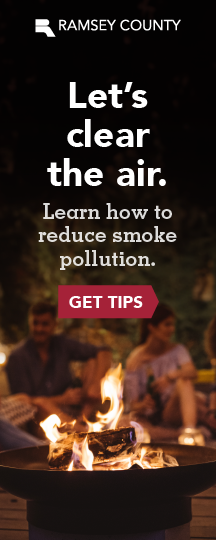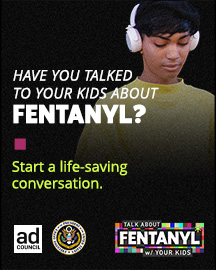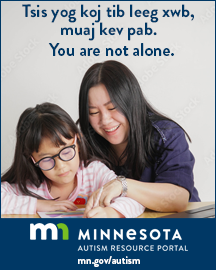The COVID-19 pandemic has been stressful and isolating for many people. Gatherings during the upcoming holidays can be an opportunity to reconnect with family and friends. This holiday season consider how your holiday plans can be modified to reduce the spread of COVID-19 to keep your friends, families, and communities healthy and safe.
Unfortunately, the COVID-19 epidemic is worsening, and small household gatherings are an important contributor to the rise in COVID-19 cases. CDC offers the following considerations to slow the spread of COVID-19 during small gatherings. These considerations are meant to supplement—not replace—any state, local, territorial, or tribal health and safety laws, rules, and regulations with which all gatherings must comply.
Considerations for Small Gatherings of Family and Friends
Celebrating virtually or with members of your own household (who are consistently taking measures to reduce the spread of COVID-19) poses the lowest risk for spread. Your household is anyone who currently lives and shares common spaces in your housing unit (such as your house or apartment). This can include family members, as well as roommates or people who are unrelated to you. People who do not currently live in your housing unit, such as college students who are returning home from school for the holidays, should be considered part of different households. In-person gatherings that bring together family members or friends from different households, including college students returning home, pose varying levels of risk.
There are several factors that contribute to the risk of getting and spreading COVID-19 at small in-person gatherings. In combination, these factors will create various amounts of risk:
- Community levels of COVID-19 – High or increasing levels of COVID-19 cases in the gathering location, as well as in the areas where attendees are coming from, increase the risk of infection and spread among attendees. Family and friends should consider the number of COVID-19 cases in their community and in the community where they plan to celebrate when deciding whether to host or attend a gathering. Information on the number of cases in an area can often be found on the local health department website.
- Exposure during travel – Airports, bus stations, train stations, public transport, gas stations, and rest stops are all places travelers can be exposed to the virus in the air and on surfaces.
- Location of the gathering – Indoor gatherings, especially those with poor ventilation (for example, small enclosed spaces with no outside air), pose more risk than outdoor gatherings.
- Duration of the gathering – Gatherings that last longer pose more risk than shorter gatherings. Being within 6 feet of someone who has COVID-19 for a cumulative total of 15 minutes or more greatly increases the risk of becoming sick and requires a 14-day quarantine.
- Number and crowding of people at the gathering – Gatherings with more people pose more risk than gatherings with fewer people. CDC does not have a limit or recommend a specific number of attendees for gatherings. The size of a holiday gathering should be determined based on the ability of attendees from different households to stay 6 feet (2 arm lengths) apart, wear masks, wash hands, and follow state, local, territorial, or tribal health and safety laws, rules, and regulations.
- Behaviors of attendees prior to the gathering – Individuals who did not consistently adhere to social distancing (staying at least 6 feet apart), mask wearing, handwashing, and other prevention behaviors pose more risk than those who consistently practiced these safety measures.
- Behaviors of attendees during the gathering – Gatherings with more safety measures in place, such as mask wearing, social distancing, and handwashing, pose less risk than gatherings where fewer or no preventive measures are being implemented. Use of alcohol or drugs may alter judgment and make it more difficult to practice COVID-19 safety measures.
The following people should not attend in-person holiday gatherings
People with or exposed to COVID-19
Do not host or participate in any in-person gatherings if you or anyone in your household
- Has been diagnosed with COVID-19 and has not met the criteria for when it is safe to be around others
- Has symptoms of COVID-19
- Is waiting for COVID-19 viral test results
- May have been exposed to someone with COVID-19 in the last 14 days
- Is at increased risk of severe illness from COVID-19
Considerations for Hosting or Attending a Gathering
If you will be hosting a gathering during the holiday season that brings people who live in different households together, follow CDC tips for hosting gatherings. If you will be attending a gathering that someone else is hosting, follow CDC Considerations for Events and Gatherings. Below are some general considerations for hosting a gathering that brings together people from different households. Guests should be aware of these considerations and ask their host what mitigation measures will be in place during the gathering. Hosts should consider the following:
- Limit the number of attendees as much as possible to allow people from different households to remain at least 6 feetapart at all times. Guests should avoid direct contact, including handshakes and hugs, with others not from their household.
- Host outdoor rather than indoor gatherings as much as possible.
- Increase ventilation by opening windows and doors to the extent that is safe and feasible based on the weather, or by placing central air and heating on continuous circulation.
- Require guests to wear masks.
- Encourage guests to avoid singing or shouting, especially indoors.
- Encourage attendees to wash their hands often with soap and water for at least 20 seconds. If soap and water are not readily available, use hand sanitizerthat contains at least 60% alcohol.
- Limit contact with commonly touched surfaces or shared items such as serving utensils.
- Plan ahead and ask guests to avoid contact with people outside of their households for 14 days before the gathering.
- Treat petsas you would other human family members – do not let pets interact with people outside the household.
The more of these prevention measures that you put in place, the safer your gathering will be. No one measure is enough to prevent the spread of COVID-19.
Food and drinks at small holiday gatherings
Currently, there is no evidence to suggest that handling food or eating is associated with directly spreading COVID-19. It is possible that a person can get COVID-19 by touching a surface or object, including food, food packaging, or utensils that have the virus on it and then touching their own mouth, nose, or possibly their eyes. However, this is not thought to be the main way that the virus is spread. Remember, it is always important to follow food safety practices to reduce the risk of illness from common foodborne germs.
Travel and Overnight Stays
Travel increases the chance of getting and spreading the virus that causes COVID-19. Staying home is the best way to protect yourself and others.
Consider whether you, someone you live with, or anyone you plan to visit with is at increased risk for severe illness from COVID-19, to determine whether to stay overnight in the same house.
If you develop symptoms consistent with COVID-19 within 14 days of the event or celebration, such as fever, cough, or shortness of breath, or if you test positive for COVID-19, immediately notify the host and others who attended. They may need to inform other attendees about their possible exposure to the virus. Contact your health care provider and follow the CDC-recommended steps for what to do if you become sick, and follow the public health recommendations for community-related exposure.
